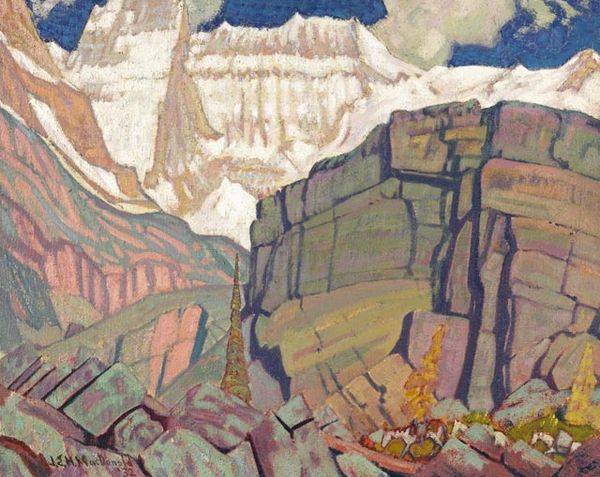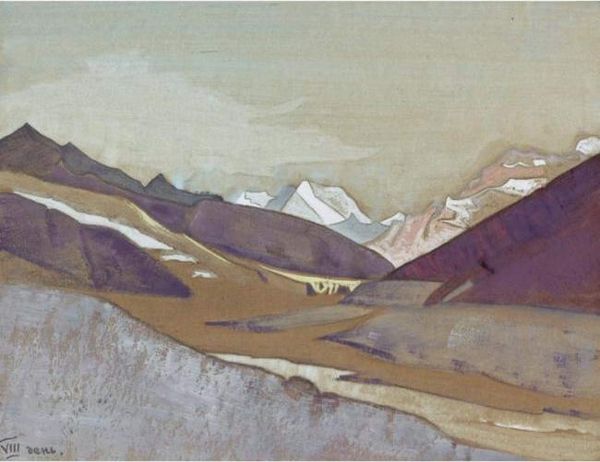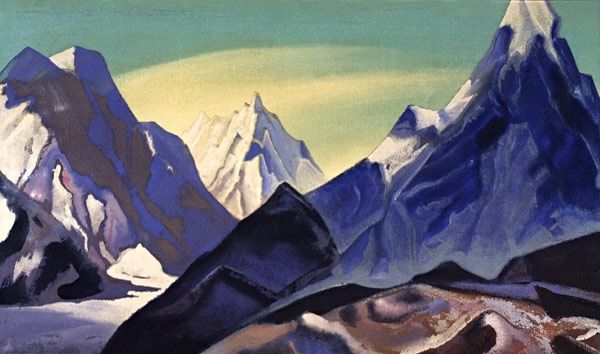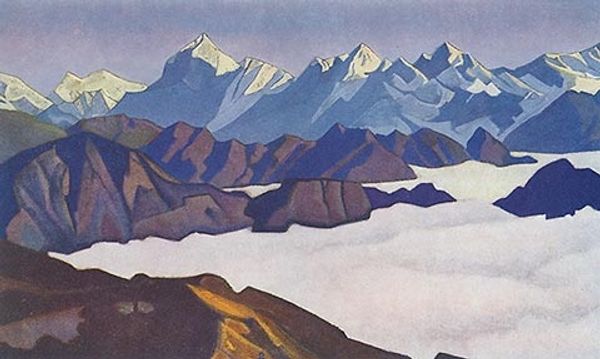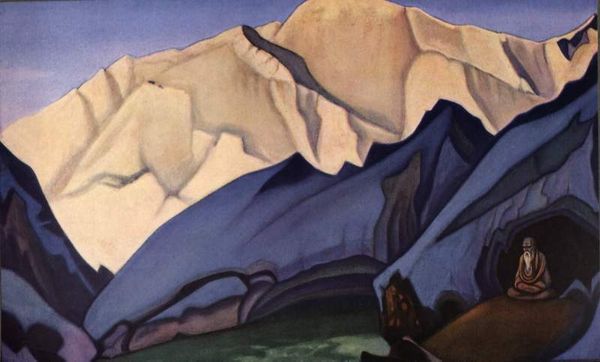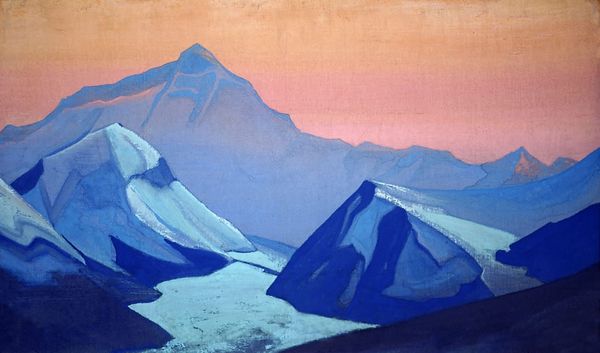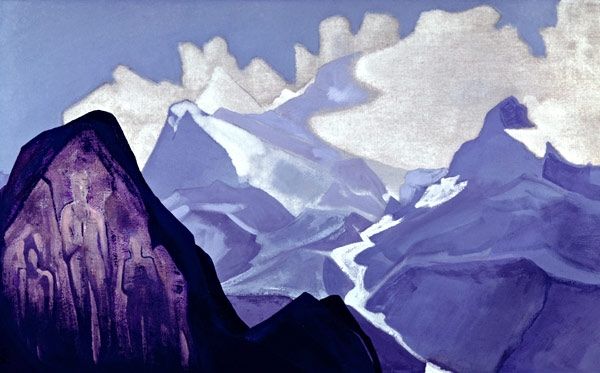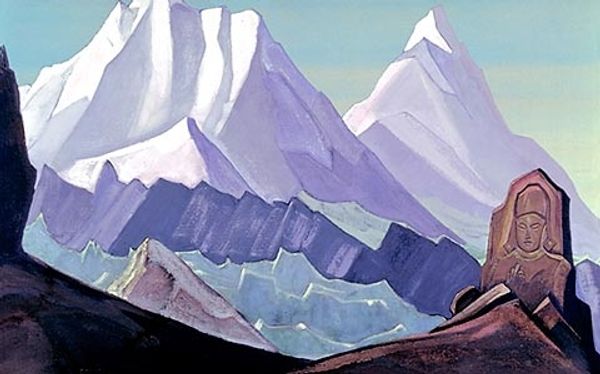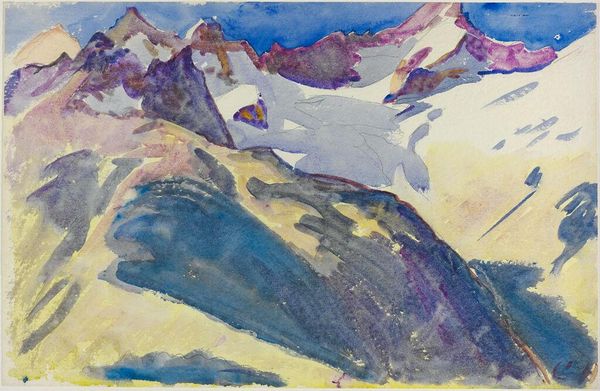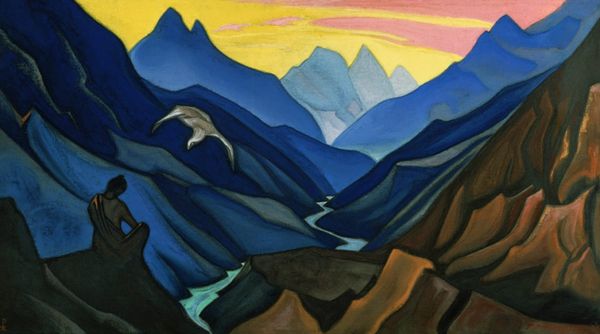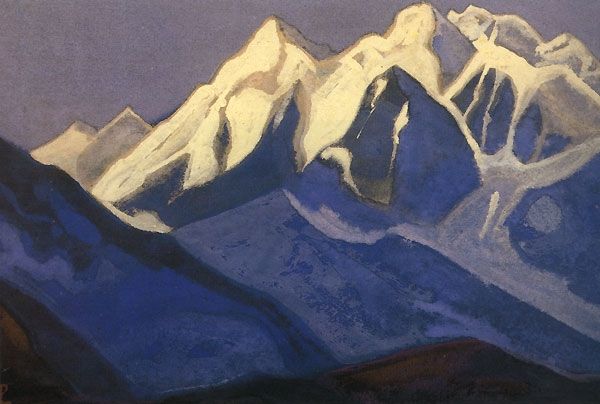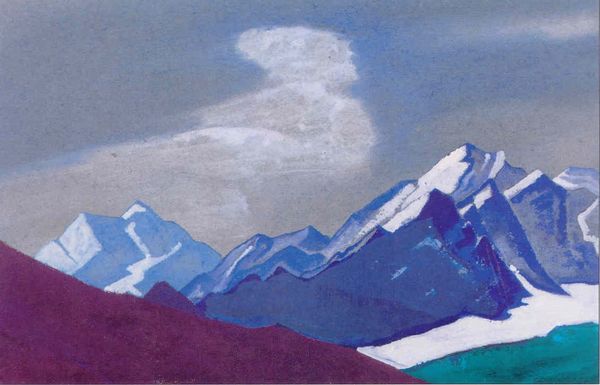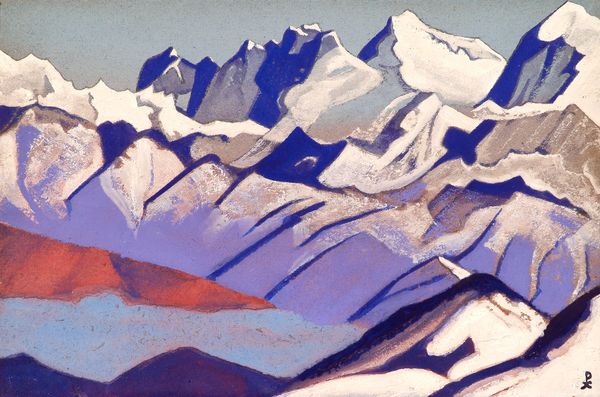
painting, oil-paint
#
painting
#
oil-paint
#
landscape
#
modernism
Copyright: Public domain
Curator: At first glance, this work presents an almost brutalist vision of the natural world. It feels very imposing. Editor: Yes, the title "Dark Autumn, Rocky Mountains" certainly primes us for a particular mood. The painting, completed by J. E. H. MacDonald in 1930, uses oil to depict the grandeur and perhaps the latent threat within the Canadian landscape. Curator: Threat is precisely the word. Those heavy, striated clouds loom large, echoing the rugged, faceted forms of the mountains themselves. Look at how MacDonald breaks down the landscape into these almost geometric planes. Editor: There's a clear fracturing and reassembling of nature happening. This modernist approach certainly moves beyond mere representation. Note the tonal range—dark greens, greys, and blues contrasting with patches of russet and gold. This echoes the melancholy of the fading year. Curator: Consider how those fractured mountain faces reflect the fragmented human psyche in the face of such overwhelming natural forces. Think of the romantic concept of the sublime, here depicted in this new, jarring vocabulary of early modernism. We're drawn in but also repelled. It's the insignificance of the individual confronting the immensity. Editor: The way MacDonald uses brushstroke is fascinating too. Short, deliberate strokes that create texture, almost mimicking the geological formations. But it's not just imitation. They function formally to generate dynamic tension within the composition. Notice how they change direction to delineate planes, playing with our sense of depth and volume. Curator: MacDonald taps into archetypal fears of the unknown. Mountainous regions have historically represented both sanctuary and danger. A place of spiritual awakening, but also potential death. It becomes a kind of secular cathedral – imposing, awe-inspiring. The painting is charged with symbols that stir feelings of uncertainty about our journey through nature and our brief time in this realm. Editor: MacDonald has offered a powerful vision. One where we examine structure while being caught in something both immediate and raw. A painting about painting, yes, but one pregnant with emotive force.
Comments
No comments
Be the first to comment and join the conversation on the ultimate creative platform.
